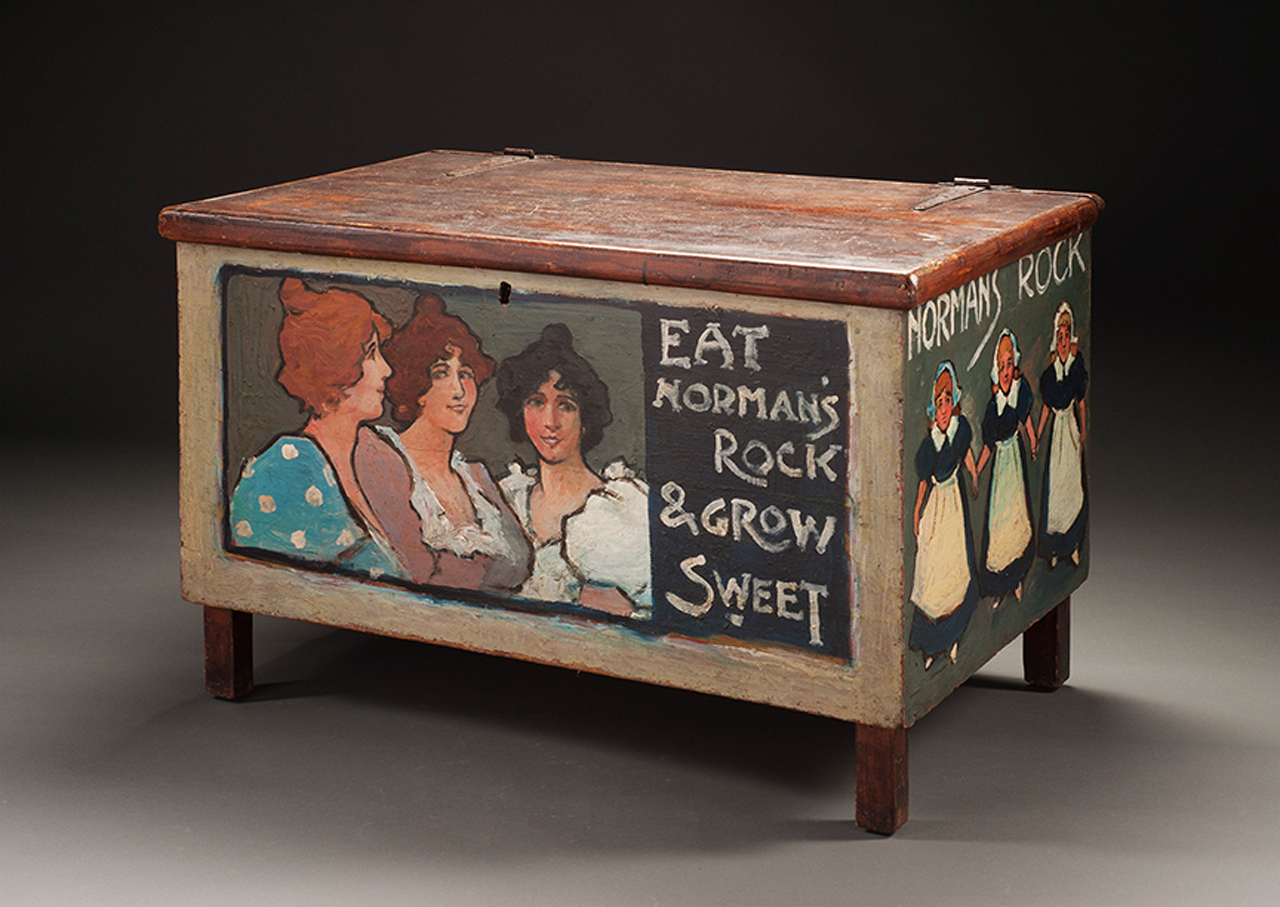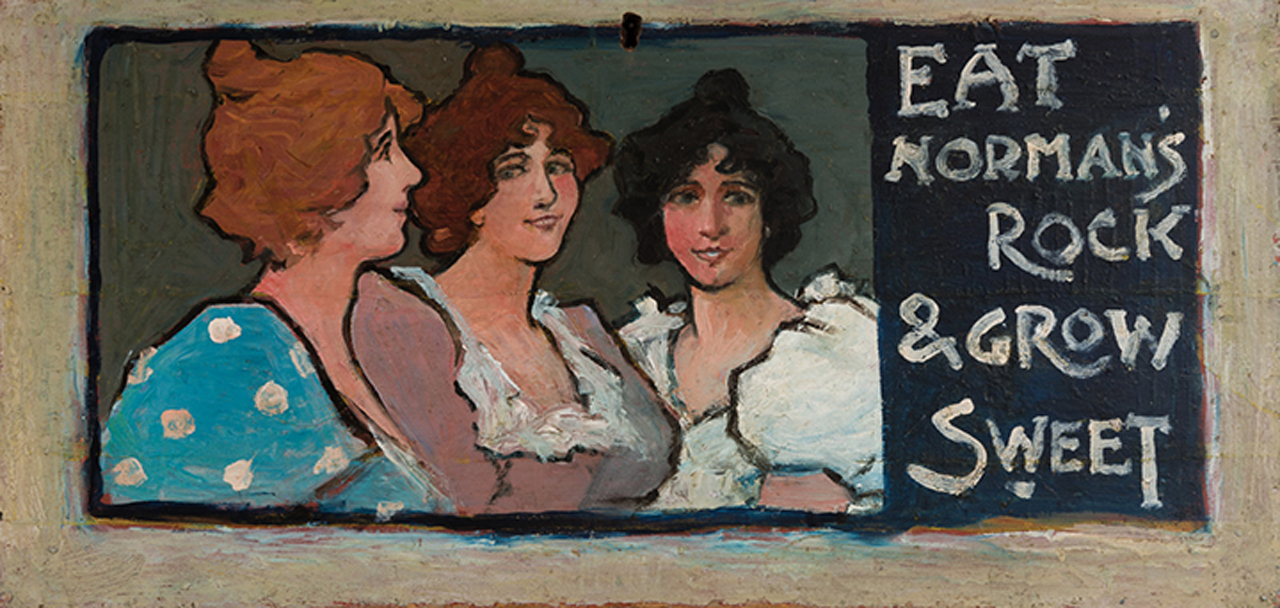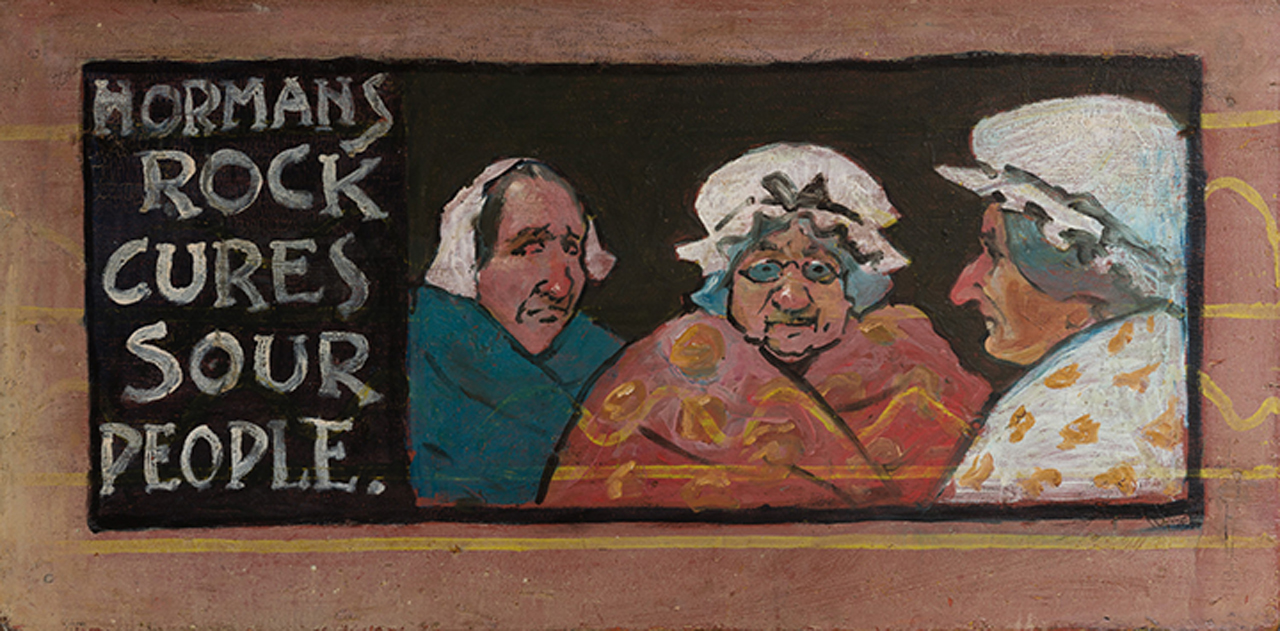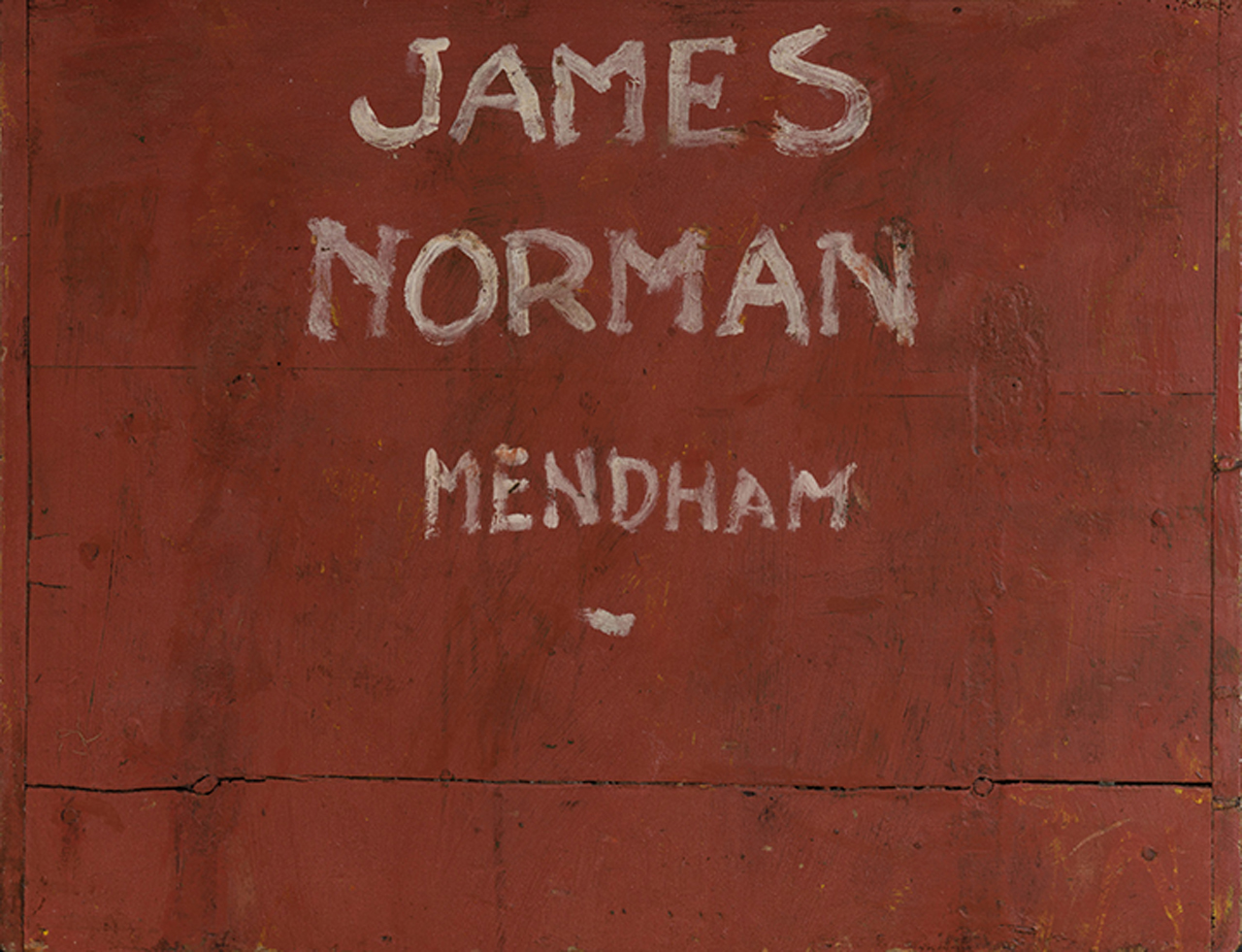2020 Fine Sporting Art, American Paintings, and Sculpture
60| Sir Alfred Munnings (British, 1878-1959)
Norman’S Rock
Provenance: John Munnings Esq., Sir Alfred James Munnings’ nephew. Purchased Spink & Son Ltd., 5-7 King Street, St. James, London, 24th July 1985. Literature: Munnings, A., The Autobiography of Sir Alfred Munnings Vol. I, An Artist’s Life, Museum Press Limited, London. 1950. This “A Gala Day”, is fondly remembered in An Artist’s Life, the autobiography of Sir Alfred James Munnings.At the time I was beginning to employ an old son of the soil; and we formed a friendship which lasted until he died. His name was Norman. He was a grandfather many times over. He was over eighty, active and strong, hale and hearty: a nature’s gentleman, a swell of the soil. Indeed, one of the rude forefathers of the hamlet, if ever there was one…Norman was not always holding horses or being painted, or gardening. He took part in other scenes‚Äîbacchanalian scenes at night in the studio.At one in the morning we used to see Norman home to his solitary abode in what was known as the parish room. We spent merry evenings in that room watching him making rock. (Think of it now, in this sugar shortage!) Parcels of brown sugar weighing two stones or more stood on the table, a great iron saucepan of toffee bubbled on the fire. To this was added peppermint and lemon essence. Then, placing a mass of brown toffee on a plate to cool, Norman shaped it out in a long, loopy affair, and taking the ends in each hand, threw it over a hook fixed to a rafter, and began steadily pulling it and pulling it, and throwing it over the hook again, until it grew longer and whiter. Then he took some of the brown toffee and pulled this out once to the length. The two cables were then twisted together and cut off in lengths of five or six inches, and laid to cool, and it was then Norman’s Rock.This rock he wheeled on Saturday afternoons up to Harleston in a large, lidded box, fixed on the springs, body, and wheels of an old perambulator. One or two of his grandchildren accompanied him to pull it up the hills. One day he brought this vehicle to the studio, and I painted three pretty girls’ faces on one side with the lettered advertisement thus: “Eat Norman’s Rock and Grow Sweet.” On the other side I painted three old maids with sour faces and wrote: “Norman’s Rock Cures Sour People.”
Oil on pineboard box, 30.5" x 19.5"
25000 - 35000
Provenance: John Munnings Esq., Sir Alfred James Munnings' nephew. Purchased Spink & Son Ltd., 5-7 King Street, St. James, London, 24th July 1985. Literature: Munnings, A., The Autobiography of Sir Alfred Munnings Vol. I, An Artist's Life, Museum Press Limited, London. 1950. This "A Gala Day", is fondly remembered in An Artist's Life, the autobiography of Sir Alfred James Munnings.At the time I was beginning to employ an old son of the soil; and we formed a friendship which lasted until he died. His name was Norman. He was a grandfather many times over. He was over eighty, active and strong, hale and hearty: a nature's gentleman, a swell of the soil. Indeed, one of the rude forefathers of the hamlet, if ever there was one...Norman was not always holding horses or being painted, or gardening. He took part in other scenes—bacchanalian scenes at night in the studio.At one in the morning we used to see Norman home to his solitary abode in what was known as the parish room. We spent merry evenings in that room watching him making rock. (Think of it now, in this sugar shortage!) Parcels of brown sugar weighing two stones or more stood on the table, a great iron saucepan of toffee bubbled on the fire. To this was added peppermint and lemon essence. Then, placing a mass of brown toffee on a plate to cool, Norman shaped it out in a long, loopy affair, and taking the ends in each hand, threw it over a hook fixed to a rafter, and began steadily pulling it and pulling it, and throwing it over the hook again, until it grew longer and whiter. Then he took some of the brown toffee and pulled this out once to the length. The two cables were then twisted together and cut off in lengths of five or six inches, and laid to cool, and it was then Norman's Rock.This rock he wheeled on Saturday afternoons up to Harleston in a large, lidded box, fixed on the springs, body, and wheels of an old perambulator. One or two of his grandchildren accompanied him to pull it up the hills. One day he brought this vehicle to the studio, and I painted three pretty girls' faces on one side with the lettered advertisement thus: "Eat Norman's Rock and Grow Sweet." On the other side I painted three old maids with sour faces and wrote: "Norman's Rock Cures Sour People."
Provenance: John Munnings Esq., Sir Alfred James Munnings' nephew. Purchased Spink & Son Ltd., 5-7 King Street, St. James, London, 24th July 1985. Literature: Munnings, A., The Autobiography of Sir Alfred Munnings Vol. I, An Artist's Life, Museum Press Limited, London. 1950. This "A Gala Day", is fondly remembered in An Artist's Life, the autobiography of Sir Alfred James Munnings.At the time I was beginning to employ an old son of the soil; and we formed a friendship which lasted until he died. His name was Norman. He was a grandfather many times over. He was over eighty, active and strong, hale and hearty: a nature's gentleman, a swell of the soil. Indeed, one of the rude forefathers of the hamlet, if ever there was one...Norman was not always holding horses or being painted, or gardening. He took part in other scenes—bacchanalian scenes at night in the studio.At one in the morning we used to see Norman home to his solitary abode in what was known as the parish room. We spent merry evenings in that room watching him making rock. (Think of it now, in this sugar shortage!) Parcels of brown sugar weighing two stones or more stood on the table, a great iron saucepan of toffee bubbled on the fire. To this was added peppermint and lemon essence. Then, placing a mass of brown toffee on a plate to cool, Norman shaped it out in a long, loopy affair, and taking the ends in each hand, threw it over a hook fixed to a rafter, and began steadily pulling it and pulling it, and throwing it over the hook again, until it grew longer and whiter. Then he took some of the brown toffee and pulled this out once to the length. The two cables were then twisted together and cut off in lengths of five or six inches, and laid to cool, and it was then Norman's Rock.This rock he wheeled on Saturday afternoons up to Harleston in a large, lidded box, fixed on the springs, body, and wheels of an old perambulator. One or two of his grandchildren accompanied him to pull it up the hills. One day he brought this vehicle to the studio, and I painted three pretty girls' faces on one side with the lettered advertisement thus: "Eat Norman's Rock and Grow Sweet." On the other side I painted three old maids with sour faces and wrote: "Norman's Rock Cures Sour People."
To Leave An Absentee Bid, Please Enter An Amount Below









